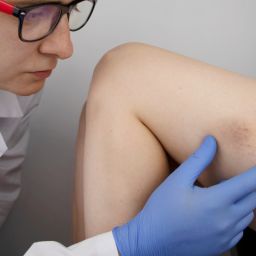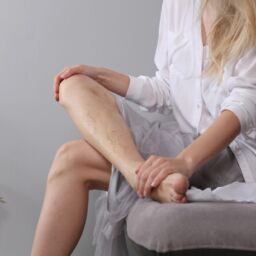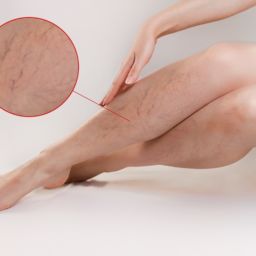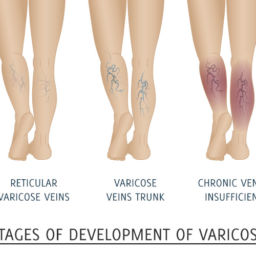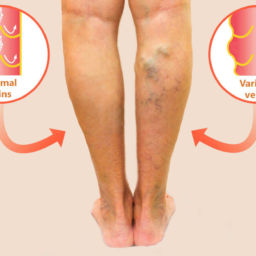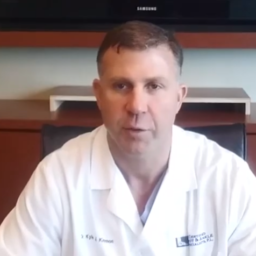
Even if varicose veins aren’t causing you any pain, you might be considering treatment options because of how they make you feel. They most often appear dark purple or blue and some patients state that it keeps them from enjoying their normal lifestyle because they want to avoid their legs or feet from being shown. The good news is that your podiatrist is able to help treat varicose veins so you can get back to being your best, active you.
Varicose veins are gnarled, enlarged veins that most commonly appear in legs and feet, and are a result from a failure of tiny valves inside the veins of the legs. In healthy veins, these valves help to move blood out of the legs and back to the heart. However, if these valves don’t function properly, they can allow blood to flow backward and pool within the veins. This causes an increase in pressure in the vein, and causes them to enlarge.
While this condition can happen to any of your veins, it most commonly occurs in your feet or legs because the pressure in the lower body’s veins increases when you stand or walk. Several risk factors can contribute to the likelihood that you will develop varicose veins, and can include:
- Age – your veins lose elasticity as you age
- Gender – women are more likely than men to develop varicose veins because female hormones have a propensity to relax vein walls
- Obesity – being overweight adds pressure to your veins
- Genetics – you have a greater risk of developing varicose veins if other family members did
- Sitting or standing for extended periods of time – your blood does not flow well if you stay in the same position for a long period of timeWhile the condition of varicose veins is unknown, they are generally benign. They are very common and affect more than 3 million cases per year. Varicose veins can last for a few years or a lifetime, and while treatment can help, the condition cannot be cured.
In most cases, there are no symptoms and varicose veins are simply a cosmetic concern. However, in some cases, they can cause aching pain and discomfort, and can ache, burn or throb. Sometimes, they can also signal an underlying circulatory problem.
The first step for treating varicose veins includes lifestyle modifications including exercise; losing weight; elevating your legs; wearing comfortable clothing; eating a low sodium, high fiber diet; and avoiding sitting or standing for long periods of time. Conservative treatment can also include compression stockings, which help to keep blood from pooling in your legs. These methods can be effective in easing pain and preventing existing varicose veins from worsening. If necessary, your doctor might recommend sclerotherapy, laser surgery, or catheter-assisted procedures to shrink and close enlarged veins. If ulcers have developed as a result of varicose veins, antiobiotics and pain medication may also be prescribed.
In addition to taking at-home measures to reduce varicose veins, you can also seek treatment at Certified Foot & Ankle Specialists. The team of doctors is able to effectively treat a wide range of conditions, including varicose veins, spider veins, and more, to help you enjoy a greater quality of life.
If you would like to seek professional care for treating your varicose veins, call (561) 995-0229 or visit www.certifiedfoot.com to make an appointment.
